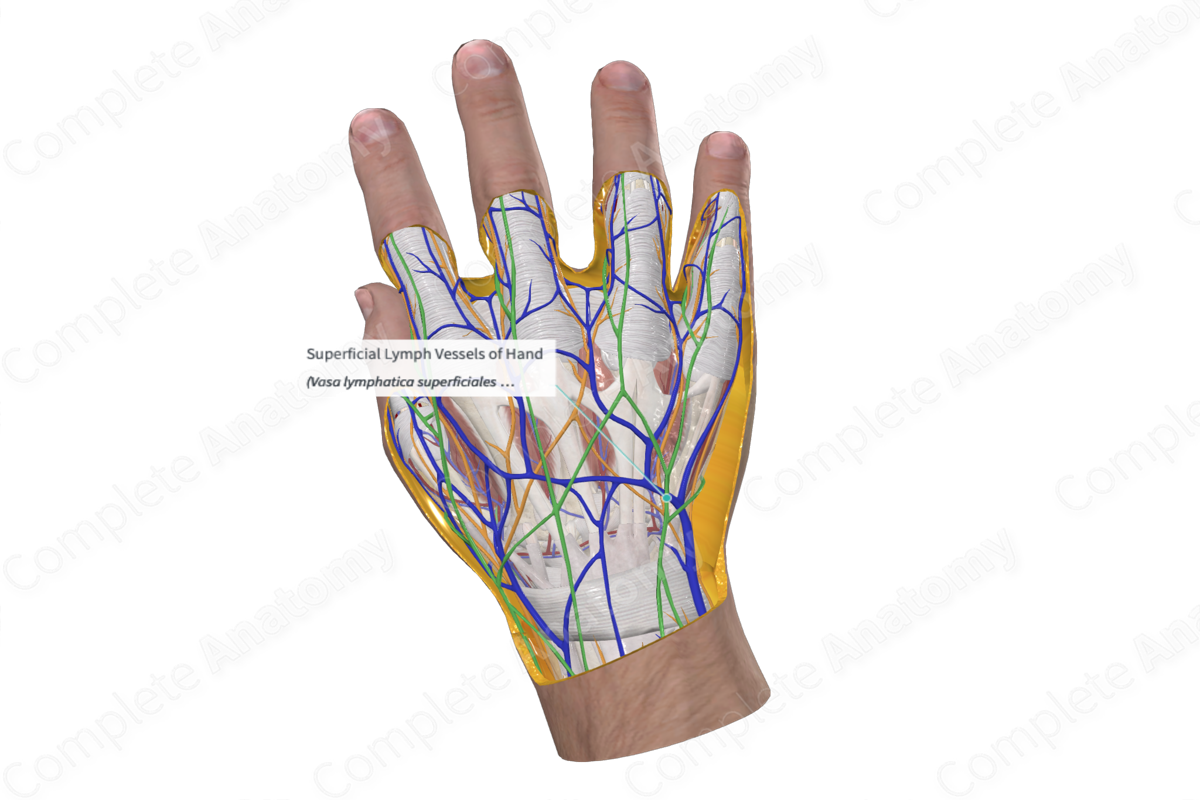
Quick Facts
Location: Loose epifascial connective tissue.
Drainage: Skin and subcutaneous layer of fingers and hand.
Direction of Flow: Superficial lymph vessels of foramen > cubital lymph nodes > superficial arm lymph vessels > lateral axillary nodes > central axillary nodes > infraclavicular nodes > subclavian trunk > right lymphatic duct (right) or thoracic duct (left).
Related parts of the anatomy
Description
There are approximately 15 to 18 lymph vessels in the dorsum of the hand, 12 to 14 in the metacarpal region and six to eight in the carpal region. The lymphatic vessels of the fingers unite at the base of the fingers and continue on a straight course, anastomosing with each other as they travel above the veins.
There are five groups of the vessels of the palm of the hand; the radial, ulnar, descending, ascending, and central vessels. The radial, ulnar, and descending vessels curve in a dorsal direction and flow into the dorsum of the hand. The ascending vessels are continuous with the median bundle in the forearm. The central vessels are located deep to the palmar aponeurosis.
Vessels from the radial or ulnar side of the hand are continuous with the radial or ulnar bundles in the forearm, respectively.
Learn more about this topic from other Elsevier products




